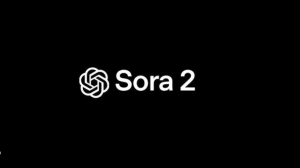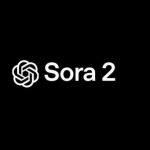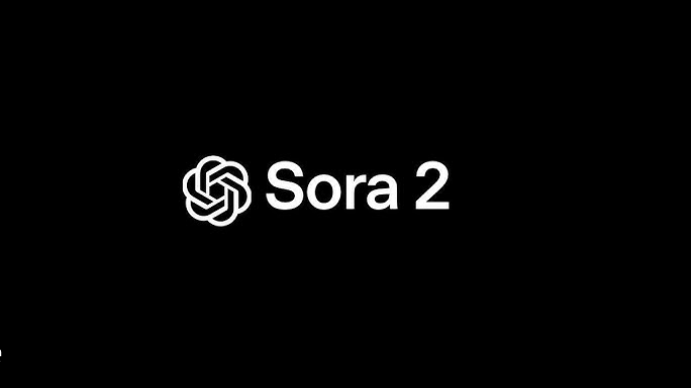SORA2 UPDATE
Sora2 release for Apple users early release. Imagine writing a sentence — “a dancer leaps across a rooftop at sunset, with distant city sounds” — and having it materialize as a video with believable motion, lighting, wind, and even ambient audio. That’s no longer sci-fi. With Sora 2, OpenAI is pushing video generation to a new frontier, one where realism isn’t just visual fluff but baked into how the system thinks about movement, sound, and continuity.

OpenAI’s Sora 2 takes AI video generation to cinematic levels. With lifelike physics, natural sound, and human-like realism, this update transforms storytelling and social content creation. Discover its new Cameo feature, audio sync, and why Sora 2 is setting a new standard for AI-powered video.
The original Sora proved that AI video could “work.” What Sora 2 promises is that it can feel real.
What’s New (and Why It Feels So Real)
Here are the standout upgrades and how they contribute to that uncanny sense of realism:
1. Native Audio + Lip Sync
Earlier models generated silent clips. Not anymore. Sora 2 fuses visuals and sound — dialogue, ambient noise, effects, even music — all in tight sync with the motion.
You’ll see lips move, hear footsteps match movement, and catch subtle environmental cues (rain patter, distant chatter) that all share space with the visuals.
2. Physics-Aware Motion & “Failure” Modeling
One of the most dramatic leaps is that Sora 2 understands physical constraints better. A backflip on a paddleboard will (mostly) respect buoyancy. A basketball shot might rim out or bounce off the backboard rather than magically score.
Moreover, the model is better at simulating failure states — that is, things going wrong — not just perfect execution. That adds to believability.
3. Temporal & Multi-Shot Consistency
Scenes no longer “reset” magically. If you describe a multi-shot sequence (“camera zooms, then cuts to close-up”) the model keeps the world state consistent — same objects, lighting, blocking, continuity.
Characters don’t randomly change posture or morph between cuts (at least less often than before). That coherence is key to immersion.
4. Cameo / Likeness Insertion
Want you in that rooftop sunset dance? Sora 2 supports a Cameo feature: you can upload a short reference (video or image) and have your likeness (and voice) inserted into generated scenes.
Importantly, OpenAI builds consent and control into this: cameo owners can revoke inclusion, and identity safeguard measures are promised.
Venturebeat
5. Style Flexibility & Prompt Control
You can tell Sora 2 to lean more cinematic, anime, hyperreal, noir — and it follows more reliably than before.
The system is more steerable. In practice, that means fewer surprises, more trust that the prompt you craft will reflect what you imagined.
6. Built-in Social App + Sharing / Remix Ecosystem
Sora 2 isn’t just a model — it arrives with a new iOS app (invite-only at launch, U.S. & Canada first) called Sora, with a TikTok/Reel-style feed of AI-generated video clips.
You can remix others’ scenes, adopt cameos from their videos, swap settings — a creative loop built into the experience.
So — How Real Is It?
“Realistic” is a high bar. When you watch a demo video from Sora 2, your brain might flicker between “this is real” and “no, digital.” Some early tests have viewers pausing to confirm whether something is AI-made. Compare it to seeing an actor onscreen: the lighting, motion blur, micro expressions all need to align. Sora 2 is closing that gap. Still, it’s not perfect. In some clips, limbs might distort, objects may shift weirdly, or audio may slip off a beat in complex scenes. Also, some users report uncanny glitches: “the skateboard video seemed completely real until the last scene where the skateboard started rolling away.” But those are edge cases. The fact that those are noticeable exceptions — rather than the norm — is already striking progress. To get access to Sora2, you will need an Invite sora2 Code. Sora2 download!
Bigger Picture: Why This Matters
For creators, it lowers the barrier to making polished video + audio content. You don’t need separate motion editors, audio mixers, or VFX rigs.
For storytellers, it gives you a “world simulation” tool — you can test scenes visually + aurally without huge production setups.
For social media, it ushers in a new class of “AI native” short video — no actors, no cameras, just prompt → share.
For competition: it pits OpenAI directly against systems like Google’s Veo 3 (which already does audio + video) — the arms race is on.
Risks & Ethical Questions
No leap this big is without concerns:
Use of likenesss: Who controls whether your face/voice can be used? OpenAI promises controls, revocations, identity safeguard measures. Copyright & IP: Early reports say rightsholders may need to opt out of having their characters appear. Sam Altman has said more “granular controls” are coming. Misuse / deepfakes: The ability to generate super realistic video + voice makes impersonation risk greater. Bias & representation: The training data’s limitations will show in underrepresented scenes or stylings. Aesthetic “slop feeds”: Some critics argue Sora 2 may flood feeds with AI-generated blandness.
OpenAI has published a “Launching Sora responsibly” document, emphasizing safety-first design, content filtering, red-teaming, and iterative mitigations. Sora 2 doesn’t just improve on AI video generation — it reframes it. By weaving together motion, physics, audio, and user controllability, it brings us much closer to “living movie fiction by command.” The uncanny valley still flickers at times, but with each generation those flickers fade. If you get an invite, play with scenes you know well (your room, your walk, your voice) — those are great tests. Watch where it stumbles and where it soars. Because watching Sora 2 videos is now part art, part nervous wonder.











